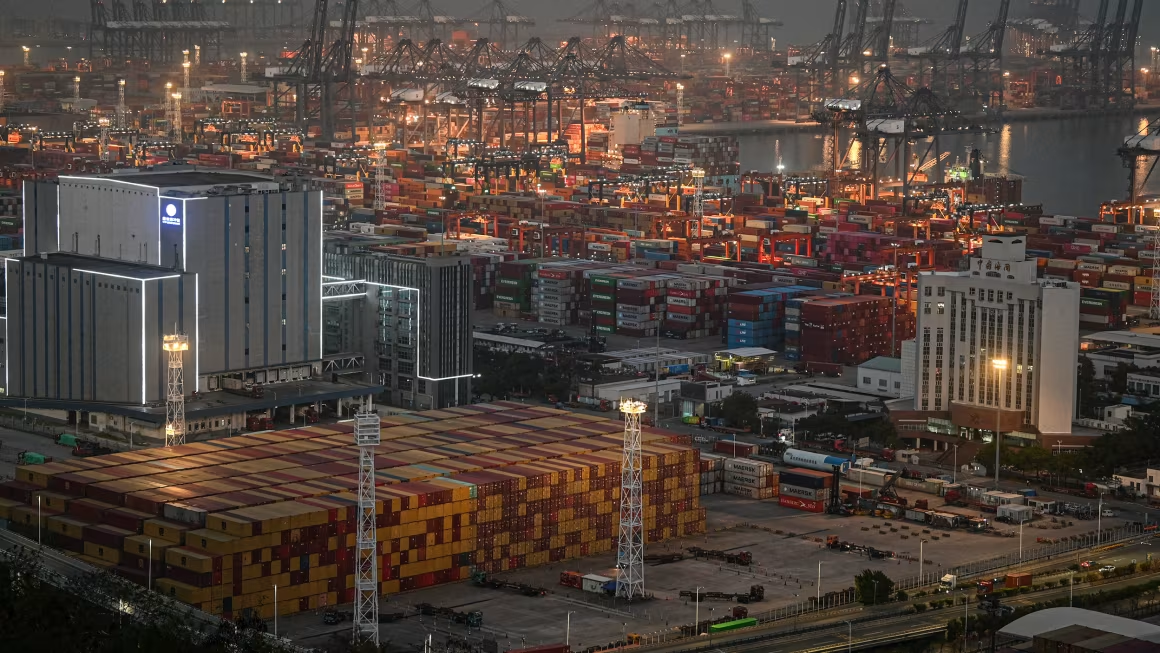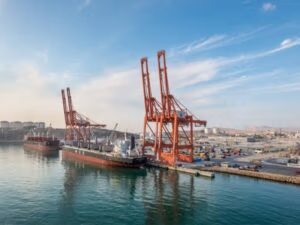China’s economy expanded by 5.2% in the second quarter, outperforming analyst forecasts, despite escalating external pressure from a prolonged trade conflict with the United States and internal economic challenges. The growth figure, released by the National Bureau of Statistics (NBS) on Tuesday, surpassed the average 5.1% forecast from a Reuters poll of 40 economists conducted last week.
The Q2 figure, however, marked a slowdown from the 5.4% growth posted in the first quarter. Combined, China’s GDP for the first half of the year rose by 5.3% compared to the same period in 2024, putting it marginally above the government’s full-year growth target of “around 5%.”
“The growth in the first half of the year was achieved under the challenging circumstances of rapidly shifting international dynamics and significantly increased external pressure since the second quarter,” said Sheng Laiyun, deputy commissioner of the NBS.
“We are also keenly aware that the external environment remains complex and volatile, internal structural problems have yet to be fundamentally resolved, and the foundation of economic performance still needs to be further strengthened,” he added.
External Pressures: Trade War with U.S. and Tariff Uncertainty
The ongoing trade war with the United States remains a major external risk to China’s economic trajectory. Under U.S. President Donald Trump’s aggressive tariff policy — which at one point reached 145% on Chinese imports — bilateral trade has been severely disrupted.
A truce brokered in Geneva in May temporarily reduced the triple-digit tariffs. However, a permanent agreement has yet to be secured, with an August 12 deadline looming. The outcome could significantly impact China’s export sector.
For now, uncertainty prevails. Even a double-digit tariff would have lasting consequences for Chinese manufacturers — the backbone of the country’s export-driven growth model.
Domestic Challenges: Weak Consumer Confidence and Property Woes
China’s domestic economy is also contending with persistent structural issues, including:
- A prolonged property market crisis
- Rising youth unemployment
- Sluggish consumer spending
- Signs of deflation in some sectors
In June, retail sales growth slowed to 4.8% year-over-year, down from 6.4% in May, missing expectations. On the other hand, industrial production beat forecasts, rising by 6.8%, up from 5.8% in May — likely reflecting positive sentiment following the trade truce.
Nick Marro, principal economist for Asia at the Economist Intelligence Unit, said the trade war has dented market sentiment but hasn’t turned into the catastrophic shock some feared earlier.
“With weaknesses in the domestic economy, such as weak consumer confidence and persistent stress in the property sector,” he said, “China is likely to barely undershoot its annual target for this year.”
Still, Marro cautioned: “There is a mismatch between what the GDP figure says and what companies and households are seeing on the ground.”
Export Resilience: Diversification Offsets U.S. Decline
Despite tensions with the U.S., Chinese exports rose 5.8% in June compared to the same period last year, exceeding analyst forecasts, according to trade data from the General Administration of Customs.
Notable developments:
- Exports of rare earths surged 32% year-on-year in June, following agreements with the U.S. to allow the continued flow of the critical elements after talks in London.
- Imports rose 1.1% in June, marking the first monthly gain since February — a potential sign of recovering domestic demand.
However, exports to the U.S. remain under pressure. Outbound shipments to America fell by 16.1% year-on-year in June, and are down 9.9% for the first half of 2024. Still, month-on-month U.S. exports grew 32% after the Geneva truce.
ASEAN Emerges as Key Trade Partner
Southeast Asia has become an increasingly vital export destination for China amid U.S. tensions. Shipments to ASEAN nations surged over 18% in June from the previous year. In some cases, Chinese goods are being routed through regional partners like Vietnam to circumvent U.S. tariffs — a workaround the Trump Administration has pledged to investigate further.
China’s strategy of supply chain diversification has not only helped buffer tariff impacts but also deepened regional economic ties. Still, the longer-term outlook hinges on securing a lasting deal with the U.S. and bolstering domestic demand at home.
Despite beating Q2 forecasts, China’s economy faces a complicated path ahead. Economists widely agree that more policy support — including targeted stimulus or monetary easing — may be necessary to maintain momentum in the second half of the year.
As the August 12 deadline approaches, global markets will be watching closely for signs of a permanent trade deal — or further escalation — between the world’s two largest economies.






